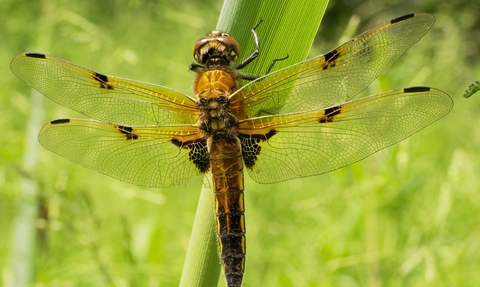
Help a Hedgehog
Should I try to help a sick or injured hedgehog?
Hedgehogs usually hibernate between November through to mid March, but they can sometimes be seen out and about during this period changing nesting sites. It is unusual to see a hedgehog staggering around during winter or in daylight, so if you do see one and it looks unwell, it might need a helping hand.
Handling and care
Hedgehogs are wild animals, so being handled is a stressful experience. If you are unsure, contact a specialist group before trying to help. If you decide to intervene, here's what to do:
Prepare a cardboard box with high sides by lining it with a towel or scrunched up newspaper (so that the hedgehog can hide).
Find yourself a pair of gardening gloves before gently scooping up the hedgehog into the box.
Keep the box in a quiet, warm place: a hot water bottle filled with hot tap water wrapped in a towel can provide a gentle heat source – make sure it doesn’t go cold!
You can provide some fresh water and meaty cat or dog food, but don't try to feed the hedgehog directly.
What to do next
If you haven't already, contact The British Hedgehog Preservation Society, who can offer in depth advice and help you find a local rescue centre. The Wildlife Trusts do not offer a general service for care and rehabilitation of sick or injured animals, although some individual Trusts may offer local services. For more information on hedgehogs and how you can help them, visit our pages on the subject.
How can you help hedgehogs?
Hedgehogs are found throughout the UK, save a few Scottish islands. Gardens, hedgerows, woodlands, grasslands, parks, and cemeteries are all important hedgehog habitats, and adult hedgehogs travel between 1-2km per night over home ranges between 10-20 hectares in size searching for food and mates – that’s entire housing estates and neighbourhoods!
Make your garden a wildlife haven
Everyone’s contribution is important. Combined, our gardens provide a space for wildlife larger than all our National Nature Reserves, so by gardening in a wildlife-friendly way, we can help our spiky companions move around safely and find a home.
